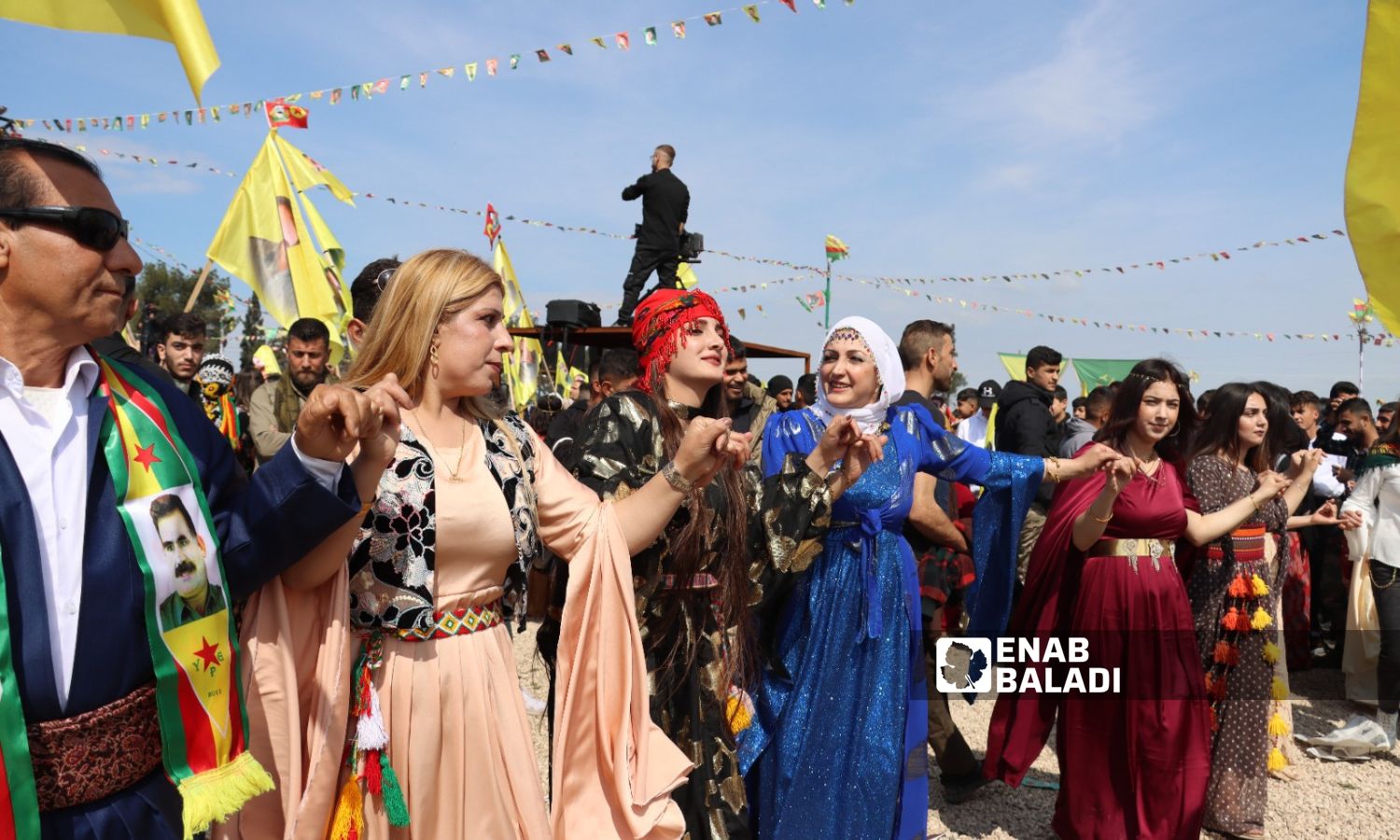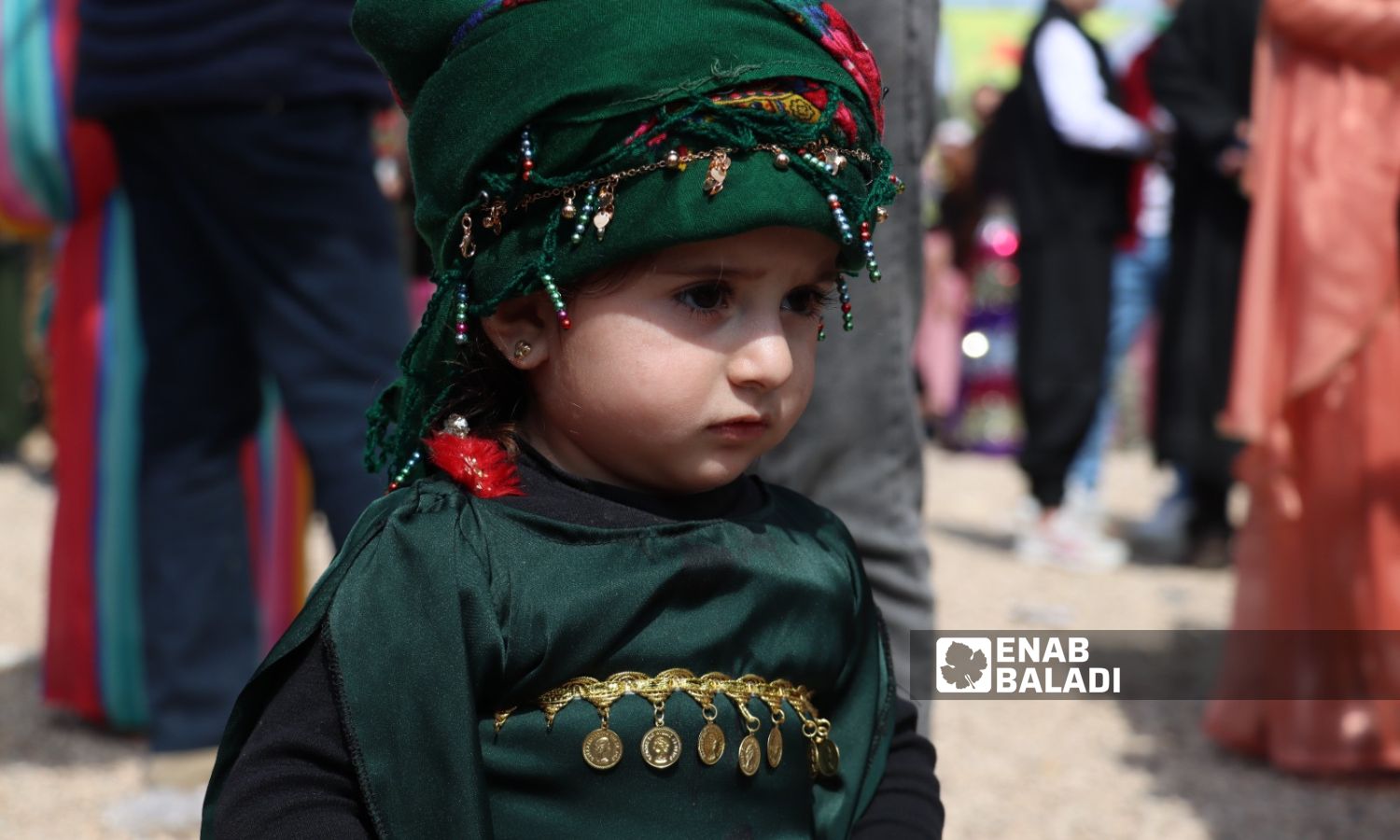



Al-Hasakah – Rita Ahmad
The clothing and fashion of each region are linked to the cultural state of its inhabitants. This determines the extent to which trends and fashions are up-to-date, considering the financial capabilities, living, and social standards of the individual, in addition to the adherence to the traditional heritage dress, which continues relatively steadily over time. It gets passed down from one generation to another without fundamental changes that could erase it as a tradition that is more prominent in social events than in everyday life. This also applies to the Kurdish dress.
Hemrin Qadro (31) is a young woman from the city of Qamishli. She emphasizes the importance of the Kurdish dress as a vital element of identity and nationality among the Kurdish community; it is not bound by political conflicts as much as it reflects an individual’s clinging to identity and loyalty to their belonging.
“Those who wear Kurdish clothes, young men and women among the general public, do not belong to political movements. They do not use their dress as a mark or sign for any kind of political alignment,” according to the young woman’s opinion. She sees significance in having at least one dress that expresses identity and nationality to be worn on cultural, national, and social occasions, especially on the Nowruz holiday.
The Nowruz dress features vibrant, pure colors that signify joy and the festive state accompanying it.
Annually, Kurds in Syria and around the world celebrate the Nowruz holiday, marking the beginning of the Kurdish New Year. They light the Nowruz torch and go out to natural places, accompanied by rituals of Kurdish folklore dance, poetry readings, and singing.
The United Nations also celebrates International Nowruz Day on March 21st every year, sharing this holiday with countries and peoples of the world after it was declared an international day in 2010, initiated by several countries including Azerbaijan, Afghanistan, Albania, Iran, Turkey, Macedonia, Tajikistan, Kyrgyzstan, Kazakhstan, and India.
The word “Nowruz” means a new day. It is the spring equinox considered the beginning of the new year, and it is a celebration that has been ongoing for more than 3000 years in Central Asia, the Balkans, the Black Sea region, the Middle East, the Caucasus, and other areas.
Pre-Syrian revolution Kurdish celebrations experienced a state of prohibition and security restrictions by the Syrian regime. It later transformed into relatively festival-like public celebrations, following a long period of suspicion and fear of disturbing the dominant security authority present in the social life of the people before 2011.

A child in Kurdish clothing during the Nowruz celebrations in the city of Qamishli, northeast Syria – March 21, 2023 (Enab Baladi)
Ameed Jakar, from the district of Amuda, points out that the traditional men’s clothing in the area consists of “Peshm and Pirqez,” which are a jacket and trousers of the same color, with broad, loose sizes.
In addition, the man wears a cloth wrapped around the waist, known as “Shutk,” and the head is covered with what is called “Jamadani,” a patterned fabric head cover.
The men’s Kurdish dress was traditionally made of sheep wool and specifically goat leather before transitioning to contemporary fabrics like linen and baize, aligning with the weather and seasons.
Yashna Kato, a seamstress from the city of Qamishli, points to the splendor of the Kurdish women’s dress, describing it as an “artistic canvas” that pleases the eyes with its bright colors and shiny fabrics, especially concerning women’s apparel, which usually consists of a long “dishdasha” (dress) covering the feet, with long sleeves connected to two conical tails.
The “dishdasha” is made of a somewhat transparent fabric, with soft silk threads and assorted designs of miniatures and shiny metal ornaments.
Beneath the “dishdasha,” the woman wears a thin and silky undershirt in a dark color which forms a base for the “dishdasha.”
The upper part of the dress is characterized by a very short sleeveless vest made of fabrics covered with decorations and metal ornaments to add more splendor and appeal to the dress. During winter, this short vest is replaced by another with long sleeves.
Kato indicated that fabrics have varied in recent years, as well as the designs in women’s clothing. This made young women, for example, resort to tailoring their engagement dresses in different ways from the usual, using higher quality and value fabrics, ranging from silk to lace and other types, along with handcrafted embellishments on the dress which usually concentrate around the chest, sleeves, and shoulders, thereby reaching a cost of about 100 US dollars, which may also exceed this amount.
if you think the article contain wrong information or you have additional details Send Correction